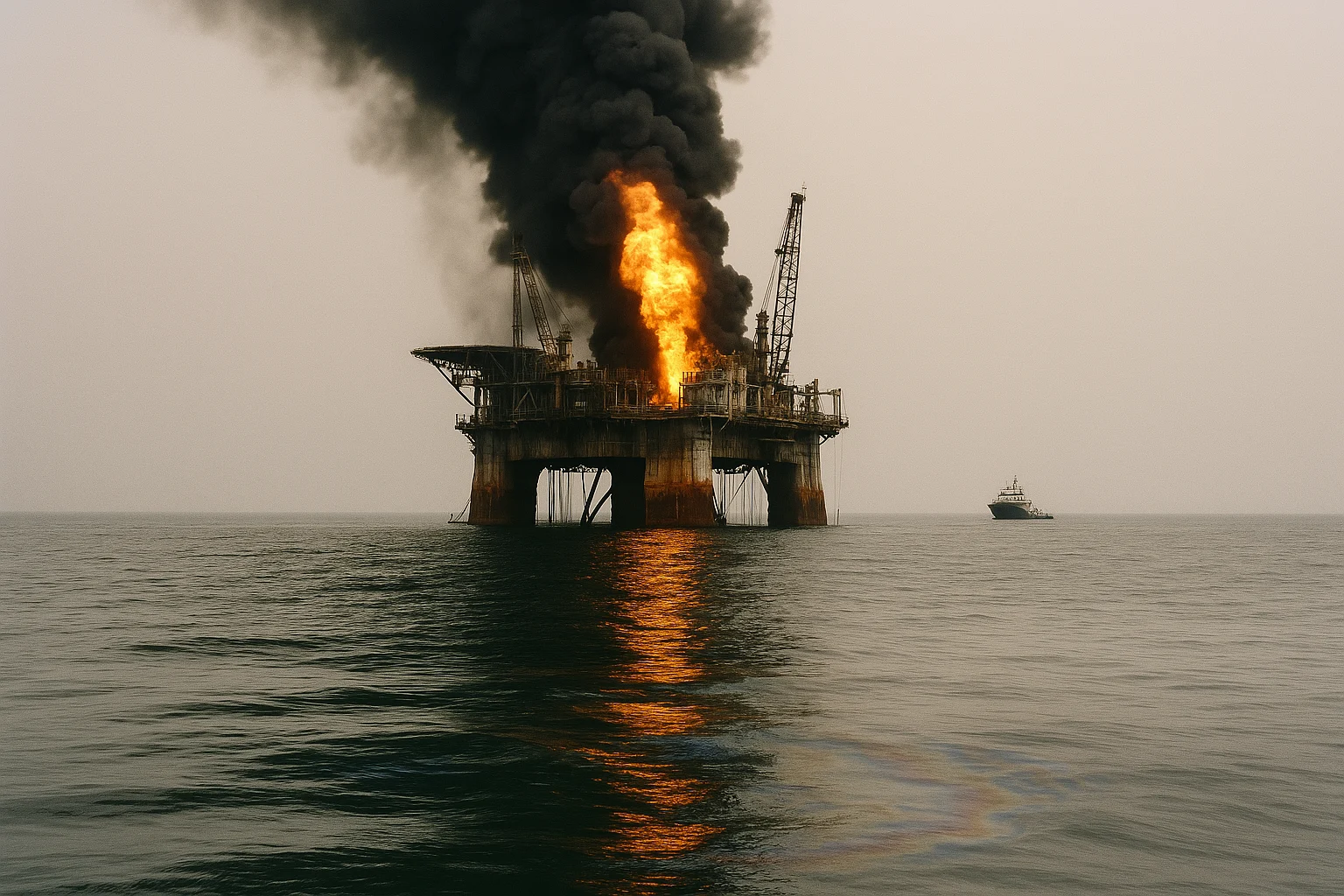
Deepwater Horizon Oil Spill
by: The Calamity Calendar Team
April 20, 2010
Troubling Waters
It started quietly enough, with the blues and greens of the Gulf of Mexico stretching out under a deceptively peaceful sky. The Deepwater Horizon rig had become a familiar sight in these waters—a massive metal sentinel standing at the precarious crossroads of ambition and nature. Owned by Transocean and under the management of BP, the rig was tasked with tapping into the Macondo Prospect, an undersea reservoir some 18,000 feet below the seabed.
But behind this curtain of mundane industry, there were ominous whispers lost amid the waves. Through the corridors of corporate offices and into the rusted innards of machinery, issues with critical equipment—a blowout preventer meant to be the last line of defense—were no longer just rumors. These were not stories of fiction; these were forewarnings, quietly recorded but mostly ignored. The stage was set for an unprecedented disaster.
Flashpoint
On that fateful evening, a sharp cry of metal splitting air signaled the end of Deepwater Horizon's routines and the beginning of a nightmare. It was a blowout, a violent surge of gas up the borehole that no failed preventer could stymie. Within moments, a fiery inferno raged across the derrick, as workers scrambled for their lives.
As darkness enveloped the Gulf, 11 men who called the rig their temporary home were lost to the flames—a stark reminder of the human cost in this tale. For their families, the impact was immediate and profound—a door closed forever. Meanwhile, the rig, now a beacon of destruction, continued its dance with flames for 36 hours until it succumbed to the deep.
The Unleashed Torrent
With the rig gone, the oil flowed freely into the Gulf, turning blue waves into black treacle. Over the course of 87 excruciating days, nature itself appeared awash in mourning, with estimated releases amounting to 3.19 million barrels of crude oil. Attempts to stanch the flow—a "top kill" here, a containment dome there—only showcased the desperate struggle to contain something monstrously beyond control.
Finally, on July 15, a cap was successfully fitted. By September 19, the well was "killed" officially, a term cruelly distant from the lived chaos it represented. The relief came tempered by the scale of devastation left behind.
Thanks for subscribing!
Harsh Realities
The Gulf was not just damage—it was ravaged. Coastal habitats, once vibrant and lush, bore the brunt of the spill. Birds, marine mammals, and fish populations succumbed in staggering numbers, their bodies washed ashore, grim evidence of the unfolding tragedy beneath the waves. The ecosystems that sustained the region had been altered, perhaps irrevocably, creating ripple effects into industries relied upon by countless locals.
The economic toll soared past $65 billion, though no monetary measure could fully encapsulate the psychological and community losses endured. Fishing boats bobbed uselessly at docks, while tourists who had once flocked to the Gulf Coast beaches stayed home, opting for cleaner shores.
Mobilizing a Response
The response to Deepwater Horizon's awfulness was monumental, an army of individuals converging against an ever-spreading enemy. From the U.S. Coast Guard to local fishermen, federal agencies, volunteers, and BP itself, the effort was colossal and sustained.
Scenes of people in hazmat suits cleaning beaches became emblematic of the spill, while legal battles raged in halls of justice. BP agreed to a sizeable settlement of $20 billion, intended to compensate the afflicted and replenish what the spill had taken. But the legal and environmental scarring doesn't fade as quickly as an oil sheen on water.
Learning from the Abyss
The legacy of the Deepwater Horizon spill lives on, not only as a cautionary tale of ambition unchecked by precaution but also in the changes it precipitated. Moratoriums on deepwater drilling, revamped safety protocols, and enhanced response strategies have all emerged in its dark wake.
BP, under intense scrutiny, has pledged to change, investing in new technologies aimed at prevention and preparedness. Yet, the Gulf is a living testament to enduring impacts—sites of disrupted fish spawning, eroded coastlines, and studies revealing the slow march of recovery.
In the somber reflection cast by this event, the world has learned much about the far-reaching impacts of oil spills. It stands as a stark reminder of the critical balance between our energy pursuits and the fragile world they inhabit. Lessons learned will guide future generations in hopes that such an episode remains a story of the past—a history never to be repeated.
Stay in the Loop!
Become a Calamity Insider and get exclusive Calamity Calendar updates delivered straight to your inbox.
Thanks! You're now subscribed.